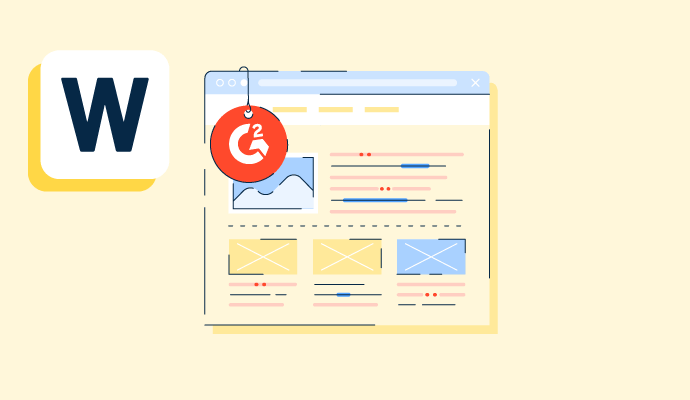What is white labeling?
White labeling is when a company makes a product that another company rebrands and sells under its own name. The original creator may sell the same product to several different retailers.
White labeling lets companies use their strengths. The product developer sells its wares to more people, and the other company can offer a wider selection of products without investing in manufacturing and design.
Many dropshippers sell white-label products. These businesses rely on dropshipping software to find suppliers and track orders.
Industries that use white labeling
White labeling is common among small boutiques and global big-box retailers alike. Some industries that frequently engage in white labeling are discussed here:
- Marketing and advertising agencies often offer white-label marketing platforms to their clients. They may sell a well-known company’s email marketing solution customized with their own branding for a more bespoke feel.
- Software and technology companies offer unbranded products to other businesses for a subscription fee. For example, a company might buy a white-label software-as a-service (SaaS) product to gain features like a customized dashboard, personalized branding, or a custom domain.
- Retail and e-commerce stores sell white-label products like clothing, electronics, cosmetics, and food. Several direct-to-consumer (DTC) companies might sell the same coffee beans in different packaging.
- Finance companies have a version of white labeling called banking as a service (BaaS). In scenarios like this, a fintech company might create a banking app with catchy branding and a sleek user interface (UI), but rely on an established bank to provide financial services.
- Health products, like nutritional supplements and vitamins, are popular white-label products. Wellness influencers sometimes sell generic vitamins with their own name, logo, and branding to their fans.
Benefits of white labeling
White labeling offers many benefits to companies, whether they’re just starting out or ready to scale. Some key advantages include:
- Quick market entry. By using pre-existing products, companies reduce their time to market (TTM). They skip past the product creation stage, a big advantage in competitive industries.
- Cost savings. White labeling eliminates the need to invest funds in extensive research, development, and manufacturing. This lets businesses focus their energy and resources on revenue-generating activities like sales, marketing, and customer acquisition.
- Brand expansion. Companies can give their customers a wider variety of products under their own brand name, increasing their market reach and brand awareness. Eventually, they may grow their customer base and generate more revenue.
- Expertise. White labeling lets companies stay in their own zone of genius and avoid task-switching. For example, an agency doesn’t have to learn the ins and outs of software development to provide clients with a branded platform or portal. Instead, they can concentrate on creating posts, reviewing metrics, and strategizing.
White labeling best practices
Companies sell a greater selection of products without investing time and money in manufacturing when they use white labeling. For the best experience with white labeling, companies should follow these best practices:
- Conduct thorough market research. Before investing in a white-label product, organizations should ensure there’s sufficient demand for it. They can perform market research via surveys, feedback forms, and customer interviews to determine their target audience's preferences.
- Check reviews or get recommendations. Companies should look for a manufacturer or provider with a proven track record of quality. They can browse review sites, industry-specific forums, trade publications, or search engine results pages to find one with satisfied customers.
- Choose a provider that offers ongoing support. No one wants to buy a shoddy product. To keep customers happy, companies have to find a manufacturer with excellent customer support and post-sales service. For example, a mobile app company should choose a white-label developer that offers bug fixes and updates.
- Establish strong relationships with suppliers. Companies have more success with white labeling if they communicate clearly and respectfully with their providers. To avoid confusion and conflict, they should set boundaries around pricing, shipping, and order sizes from the start.
White labeling vs. private labeling
White labeling and private labeling both involve companies selling unbranded products under their own name. They also have distinct differences.
In white labeling, one company creates and sells a product to multiple companies or retailers. These brands each add their logo and packaging and sell it to their target market. In essence, the same product is sold under various names at different companies.
By contrast, private labeling is when a manufacturer creates products specifically for one company. The second company can specify their desired product requirements, allowing them more customization and control. For instance, grocery stores and home goods stores often sell products under a house brand name. Private labeling is typically more expensive than white labeling due to its exclusivity.
Learn more about how dropshipping can bring a business success, even with no inventory.

Kelly Fiorini
Kelly Fiorini is a freelance writer for G2. After ten years as a teacher, Kelly now creates content for mostly B2B SaaS clients. In her free time, she’s usually reading, spilling coffee, walking her dogs, and trying to keep her plants alive. Kelly received her Bachelor of Arts in English from the University of Notre Dame and her Master of Arts in Teaching from the University of Louisville.

